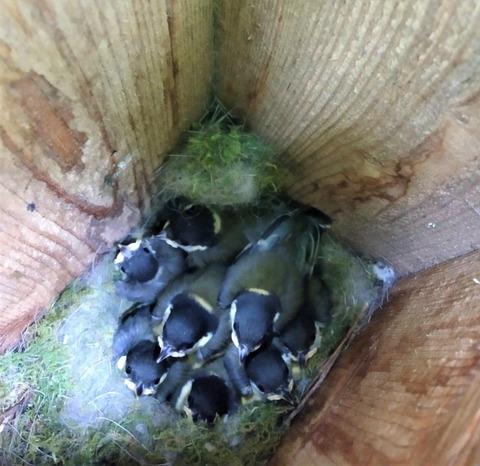当前位置:
X-MOL 学术
›
Ecol. Evol.
›
论文详情
Our official English website, www.x-mol.net, welcomes your
feedback! (Note: you will need to create a separate account there.)
The effect of nest temperature on growth and survival in juvenile Great Tits Parus major
Ecology and Evolution ( IF 2.3 ) Pub Date : 2021-05-01 , DOI: 10.1002/ece3.7565 Alejandro Corregidor-Castro 1 , Owen R Jones 1, 2
中文翻译:

巢穴温度对大山雀幼鸟生长和存活的影响
更新日期:2021-06-22
Ecology and Evolution ( IF 2.3 ) Pub Date : 2021-05-01 , DOI: 10.1002/ece3.7565 Alejandro Corregidor-Castro 1 , Owen R Jones 1, 2
Affiliation

|
- For birds, maintaining an optimal nest temperature is critical for early-life growth and development. Temperatures deviating from this optimum can affect nestling growth and fledging success with potential consequences on survival and lifetime reproductive success. It is therefore particularly important to understand these effects in relation to projected temperature changes associated with climate change.
- Targets set by the 2015 Paris Agreement aim to limit temperature increases to 2°C, and, with this in mind, we carried out an experiment in 2017 and 2018 where we applied a treatment that increased Great Tit Parus major nest temperature by approximately this magnitude (achieving an increase of 1.6°C, relative to the control) during the period from hatching to fledging to estimate how small temperature differences might affect nestling body size and weight at fledging and fledging success.
- We recorded hatching and fledging success and measured skeletal size (tarsus length) and body mass at days 5, 7, 10, and 15 posthatch in nestlings from two groups of nest boxes: control and heated (+1.6°C).
- Our results show that nestlings in heated nest boxes were 1.6% smaller in skeletal size at fledging than those in the cooler control nests, indicating lower growth rates in heated boxes, and that their weight was, in addition, 3.3% lower.
- These results suggest that even fairly small changes in temperature can influence phenotype and postfledging survival in cavity-nesting birds. This has the potential to affect the population dynamics of these birds in the face of ongoing climatic change, as individuals of reduced size in colder winters may suffer from decreased fitness.
中文翻译:

巢穴温度对大山雀幼鸟生长和存活的影响
对于鸟类来说,保持最佳的巢穴温度对于生命早期的生长和发育至关重要。偏离这一最佳温度可能会影响雏鸟的生长和雏鸟的成功,并对生存和终生繁殖成功产生潜在影响。因此,了解这些与气候变化相关的预计温度变化的影响尤为重要。
2015 年《巴黎协定》设定的目标旨在将气温升高限制在 2°C 之内,考虑到这一点,我们在 2017 年和 2018 年进行了一项实验,我们采用了一种处理方法,将大山雀主巢温度提高了大约这个量级(相对于对照,增加 1.6°C)在从孵化到长出羽毛的过程中,估计微小的温度差异可能会如何影响雏鸟的身体大小和重量,以及雏鸟的长出和成功。
我们记录了孵化和长出雏鸟的成功情况,并测量了孵化后第 5、7、10 和 15 天来自两组巢箱的雏鸟的骨骼尺寸(跗骨长度)和体重:对照组和加热组(+1.6°C)。
我们的结果表明,加热巢箱中的雏鸟在长出羽毛时骨骼尺寸比温度较低的对照巢中的雏鸟小 1.6%,这表明加热巢箱中的生长速度较低,而且它们的重量也低 3.3%。
这些结果表明,即使温度相当小的变化也会影响空巢鸟类的表型和雏鸟后的生存。面对持续的气候变化,这有可能影响这些鸟类的种群动态,因为在寒冷的冬天体型减小的个体可能会遭受适应性下降的影响。









































 京公网安备 11010802027423号
京公网安备 11010802027423号